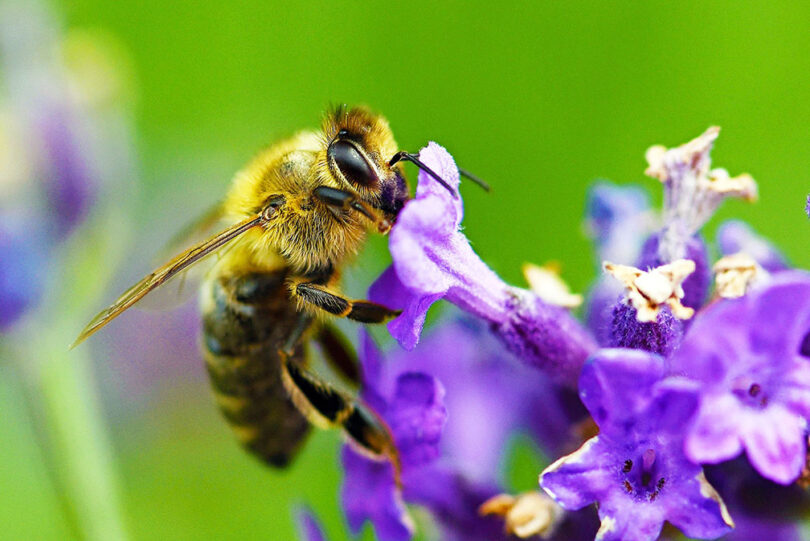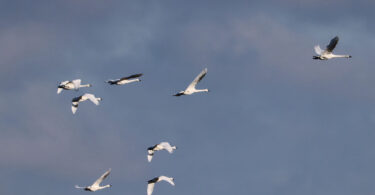PHOTO BY SLAVICA77 AT SHUTTERSTOCK.COM
Research from N.C. State scientists found that planting small habitats (between 0.1 and 1 acre) with a variety of different flowers helped grow local bee populations across the state.
Pollinator Week in North Carolina, the annual celebration of animals who are quietly upholding the world food supply was held in June. The event was run by a partnership that includes researchers working to monitor pollinator populations across North America.
Despite our reliance on these insects, native bee populations—the most efficient and prolific pollinator—have been steadily declining nationwide due to a number of environmental threats, including pathogens and reduced habitats.
But there’s hope for bee populations. In North Carolina, researchers at N.C. State found that planting small habitats rich in different flower species elevated bee numbers and diversity over a three-year period.
“We found an increase in the number of bees over time across the state,” said Hannah Levenson, a postdoctoral researcher from NC State. “And we found new species and new genera of bees coming to the habitat every year.”
Like a Field of Dreams, if you build it, the bees will come. This mentality was shared by the N.C. Department of Agriculture & Consumer Services which mandated the development of these pollinator plots on agricultural research stations in 2016, where the data was collected. The government-led pollinator project is believed to be the first of its kind.
Levenson saw these plots as a research opportunity.
Together with her co-author David Tarpy, a professor at the Department of Applied Ecology at NC State, they used the pollinator plots as outdoor laboratories to test if bee populations changed from 2016 to 2018.
Levenson said that she and Tarpy wanted to understand the impact of these plots.
“Because we want to know, is it actually doing what we’re setting out to do? Are the resources and the efforts that we’re putting in actually giving back the results that we want?” said Levenson.
Flower diversity and cover played a significant role in recruiting more bees to the research plots.
“We found that the more species of flowers that you had, the more bees you supported, and the more different kinds of bees you supported,” Levenson said. “So the quality of the habitat and what we consider high quality, as lots of blooms and lots of different kinds of flowers, was very important.”
While bee samples are no longer actively collected from these plots, the pair continue to find novel uses for the rich data set. Including, a fresh initiative to understand how different plot characteristics may influence the presence of parasitic mites that live on the bees and impact their health.
The success of the research plots in boosting local bee populations points to the importance of small backyard or community gardens in supporting neighborhood pollinators. It is unclear, however, how much of a difference these small plots would make on a larger—even global—scale.
Still, what’s evident is that quality is the key to a successful pollinator program.
“The more you put into this, the more effort, the more care you put in, the more you are going to get back,” Levenson said, “and the more you’re going to support the bee community.”
Paige Miranda, WUNC Radio







